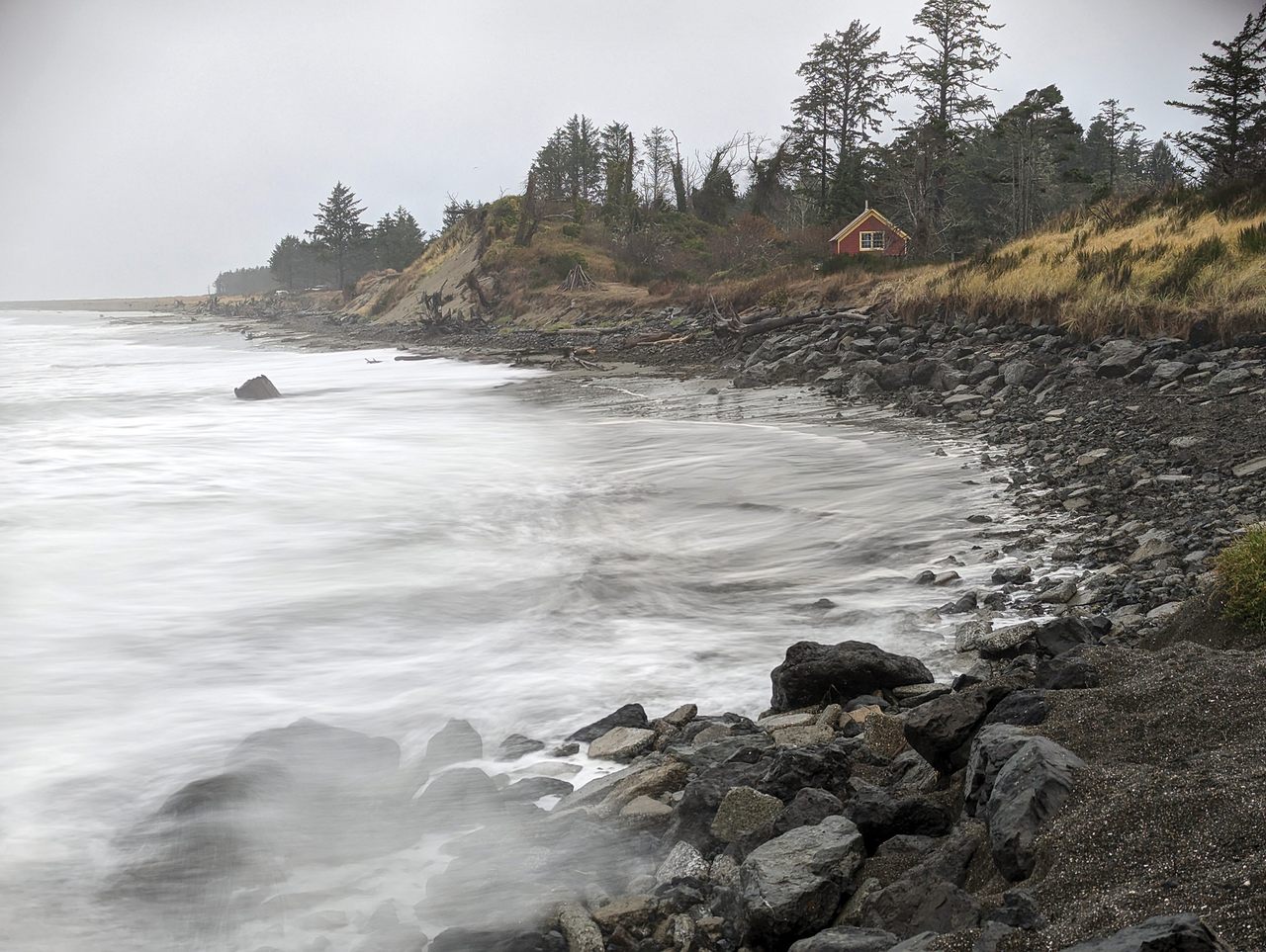
DAVID COTTRELL STOOD ON WHAT used to be a 14-foot-high cliff at the crumbled end of Blue Pacific Drive. Just a few years ago, this was the fastest-eroding shoreline on the U.S. Pacific Coast; locals here in North Cove, Washington, dubbed it “Washaway Beach.” But as Cottrell walked toward the water on a sunny November morning, he stepped not off a cliff but onto soft, dry sand. Thigh-high dune grasses sprawled in all directions. The low tide lapped at a flock of sandpipers a few hundred feet away.
Cottrell, a cranberry farmer and local drainage commissioner, held up a laminated map, pointing to our location. During his childhood, this was part of a dense beachside neighborhood, but the tides have swept most of it away — a complex phenomenon related to dams and jetties that have changed the flow of sediments. “Where we’re standing right now, we were losing 50 to 100 feet a year,” he said. All told, North Cove has lost more than 4 square miles of land, plus a lighthouse, a cannery, and 160 other structures.
By 2015, many residents had given up on saving their town. Facing predictions of continued erosion, agencies had begun talk of moving Highway 105 away from the coast—a loss that could doom this isolated rural community. An essential transportation artery, 105 serves as the dike that protects 800 acres of historic bogs where Cottrell and other farmers grow more than half the state’s cranberries. Cottrell felt he had to try something. “We had absolutely nothing to lose,” he said.
So in 2016, Cottrell dropped $400 worth of rocks from the end of this road: “one load, right off the end, just to see what would happen.” He sought to mimic the cobble beaches and basalt slides that are common in the Pacific Northwest. That experiment has since grown into a more than 2-kilometer-long berm of rocks and stumps that shift with the waves and collect sand, rebuilding the beach.
As a result, much of this coastline has held, putting North Cove at the forefront of a global shift in how communities protect their coastlines as sea levels rise. Engineers—who have long depended on rigid sea walls—are now closely watching this softer approach. North Cove’s solution, which resembles the techniques many Indigenous communities use to cultivate shellfish, looks less like the conventional structures engineers know, and more like the dunes and berms that centuries of storms and tides build on their own.